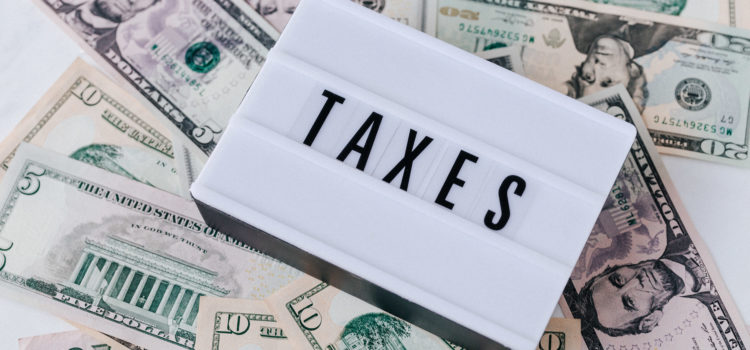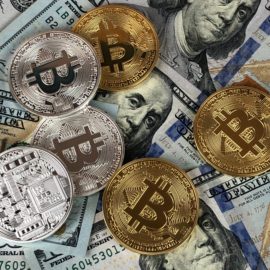

This article is an excerpt from the Shortform book guide to "The 1619 Project" by Nikole Hannah-Jones. Shortform has the world's best summaries and analyses of books you should be reading.
Like this article? Sign up for a free trial here .
How does regressive taxation contribute to economic inequality? Why do the rich pay less than their fair share of taxes?
Regressive taxation is why America lacks funding for social initiatives and is riddled with economic inequality. The wealthiest people and corporations can avoid paying their fair share of taxes, so the bulk of public funds is pulled from the pockets of modest families.
Keep reading to learn about the origins of regressive taxation and how it contributes to economic inequality.
The Origin of Regressive Taxation
Regressive taxation became dominant in America because of the three-fifths compromise—a ploy by the South to preserve slavery. The compromise allowed Southern states to count three-fifths of their enslaved populations as “people” in the House of Representatives—this arbitrarily inflated their populations while denying citizenship and voting rights to enslaved people. Their high population counts then granted them political leverage over the North, allowing them to veto national policy and preserve slavery.
However, when the country started to implement taxation, the three-fifths compromise implied that Southern states would pay more taxes because of their higher populations. So to avoid a higher tax rate, Southerners pushed for imports to be taxed instead of people—meaning consumers would ultimately pay higher prices to cover the tax on the imports they purchased. This began the long-standing tradition of American taxation being hidden in consumerism and the wealthy being able to avoid paying their fair share—the root of American regressive taxation.
| The Uniformity Clause Historians agree that heavy consumer taxes are a result of the three-fifths compromise and the South’s efforts to maintain slavery while avoiding higher taxation; however, they add that the “uniformity clause” of the Constitution was the key that allowed the South to maintain both slavery and moderate taxation. The uniformity clause stated that “all duties, imposts, and excises shall be uniform throughout the United States,” meaning that no tax could be imposed that would impact a certain geographical region more than the rest of the country. For example, without this protection, the North could impose a tax on slaves that would disproportionately impact the South. This would allow them to ultimately tax slavery out of existence, and the South knew this. So by establishing the uniformity clause, the South avoided paying higher taxes while also protecting the institution of slavery against targeted tax attacks from the North. |
The Impacts of Regressive Taxation Today
Regressive taxation in America allows large wealthy corporations like Amazon and Netflix to avoid paying taxes and results in economic inequality and poor social initiatives like a lack of funding for public schools and healthcare.
The authors continue to explain that progressive taxation and higher income tax for the wealthy would dissolve some of the maladies America faces. This would provide the nation with more funding to spend on public programs that would help low-income families gain opportunities and resources, ultimately minimizing economic inequality.
| Is American Taxation Regressive or Progressive? The 1619 Project claims that American taxation is regressive, meaning that low-income earners pay more of their income on taxes than high-income earners. However, this claim is currently being heavily debated. Officially, the US Tax Foundation claims that the American Tax Code is progressive, but economists argue otherwise. In The Triumph of Injustice, economists Emmanuel Saez and Gabriel Zucman argue that, including state and local taxes, the US tax code asks average American families (poor to moderately wealthy) to pay roughly 25 to 30% of their income in taxes. However, the ultra-wealthy (the top tenth of the wealthiest 1%) pay just over 20%. And, this group holds roughly the same wealth as the bottom 90% of Americans combined. So overall, “average” Americans are paying a much higher percentage of their income than the ultra-wealthy. And, like the authors of The 1619 Project, Saez and Zucman argue that the bulk of public funds from taxes come from regular families while a large portion of American wealth remains in the pockets of the ultra-wealthy. Saez and Zucman conclude that this is largely why America faces such extreme economic inequality and a lack of initiatives for the common good (like healthcare for all) that other capitalist nations have. |

———End of Preview———
Like what you just read? Read the rest of the world's best book summary and analysis of Nikole Hannah-Jones's "The 1619 Project" at Shortform .
Here's what you'll find in our full The 1619 Project summary :
- A reframing of American history with the institution of slavery at its core
- How democracy as we know it today was largely built by enslaved Blacks
- The racist institutions that persist today that originated from slavery






